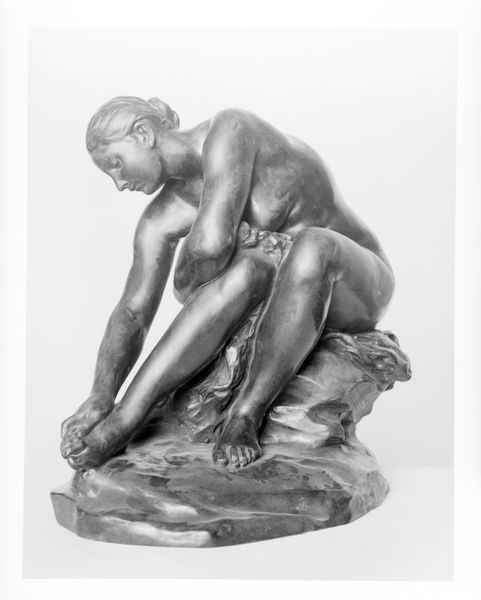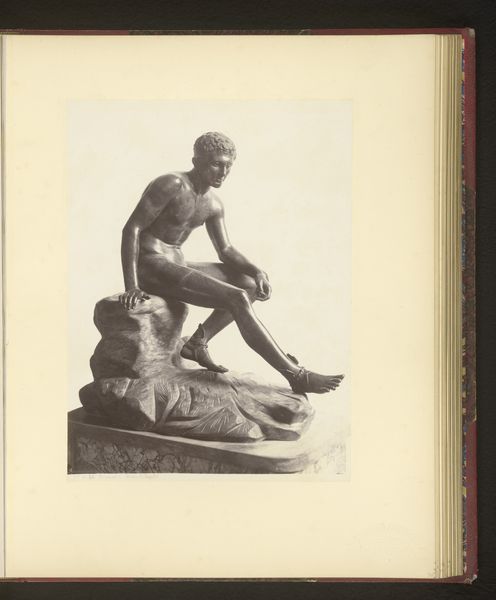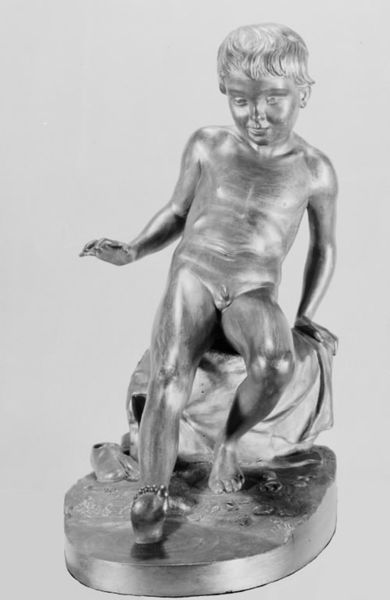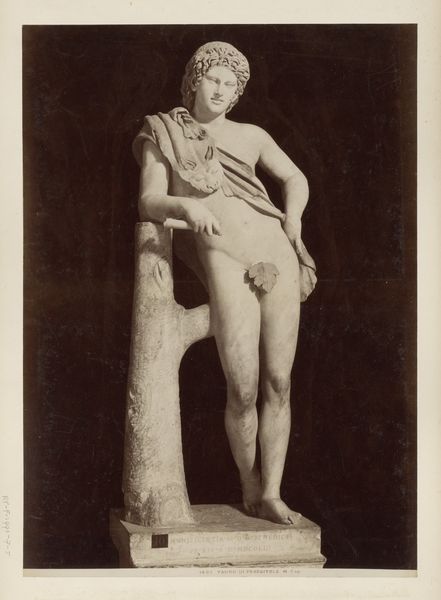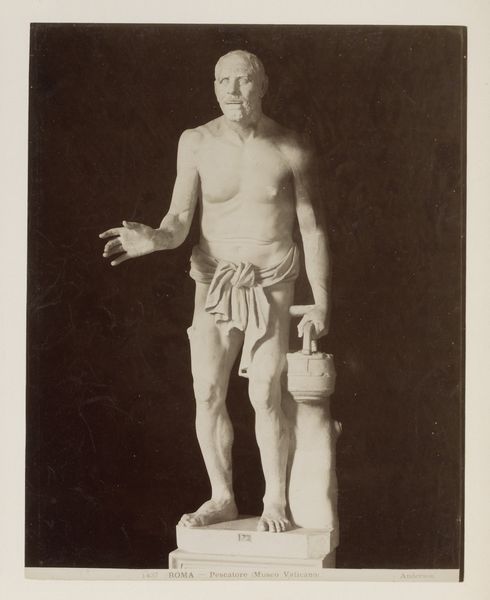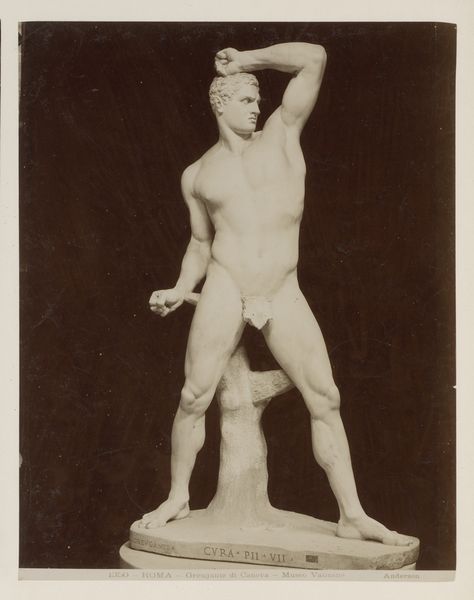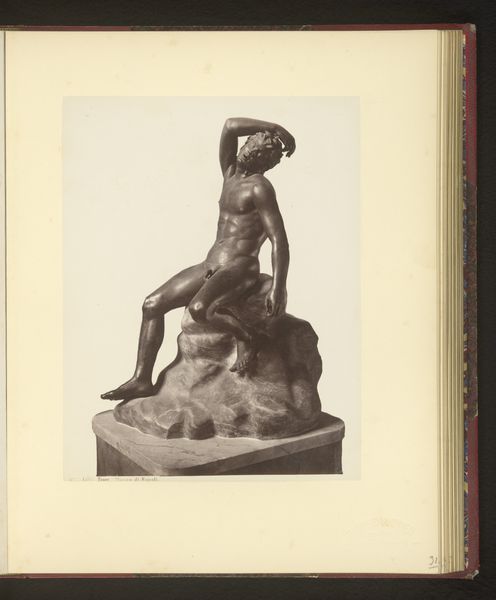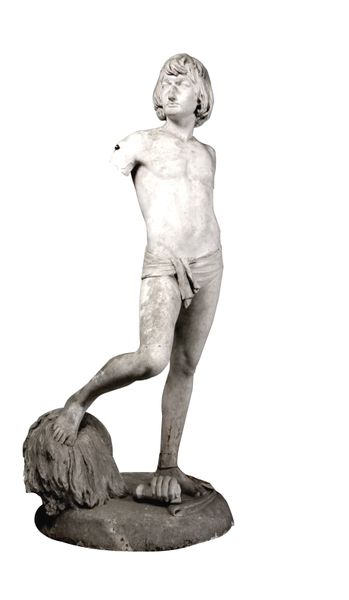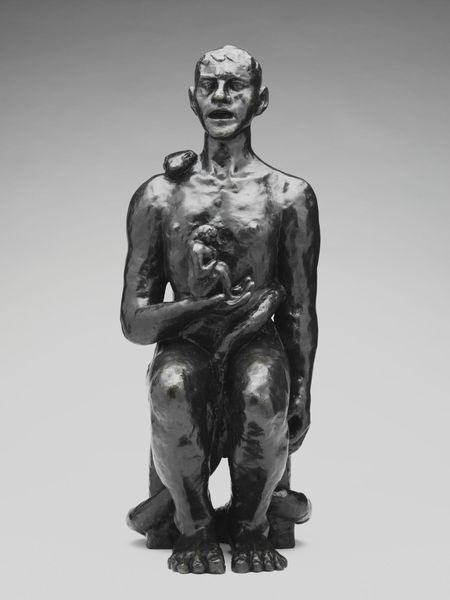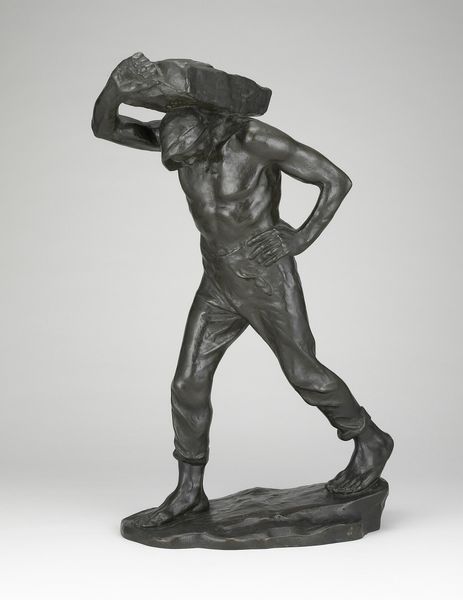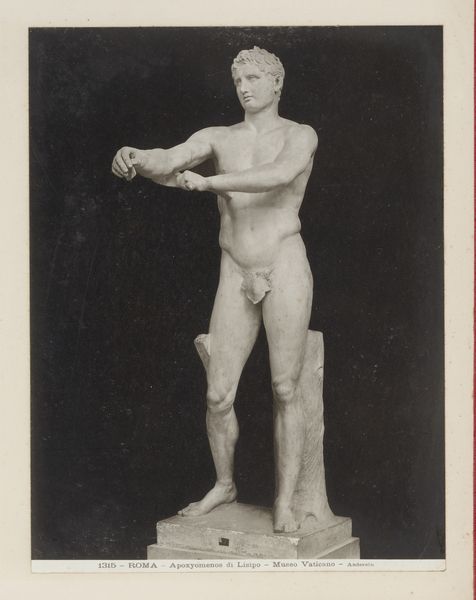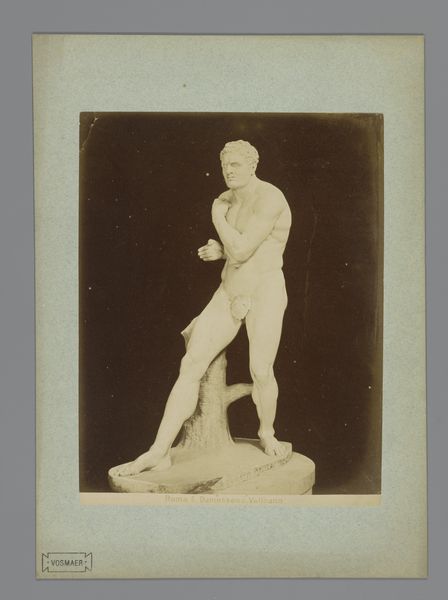
albumen-print, bronze, photography, sculpture, albumen-print
#
albumen-print
#
sculpture
#
landscape
#
classical-realism
#
bronze
#
figuration
#
photography
#
classicism
#
ancient-mediterranean
#
sculpture
#
nude
#
italy
#
albumen-print
Dimensions: 9 1/16 x 7 1/8 in. (23.02 x 18.1 cm) (image)
Copyright: Public Domain
Curator: Immediately, the weight and solidity of this sculpture captured in a photograph stand out. Editor: And that capture is what interests me. This is an albumen print titled "Mercurio" and comes to us from the late 19th or early 20th century, and is currently housed at the Minneapolis Institute of Art. Curator: Albumen—egg white. Amazing how such a delicate material could produce such sharp, almost brutal contrasts in capturing bronze, a classical choice of material for figuration like this. Editor: Precisely! The choice of bronze connects it directly to a lineage of classical ideals and representation of power, status, even divine qualities attributed to figures like Mercury. It’s a reproduction, but what social context does that imply? Were prints like this sold to elites? Students? Curator: We can also read this image as a study in labor. The meticulous carving evident on the rocky base suggests a highly skilled artisan, or perhaps multiple artisans, working on this one sculpture. It brings into question the divisions that separate fine art from craft, doesn't it? The creation, distribution and, ultimately, consumption. Editor: Good point, especially because photographic prints, thanks to the mechanization inherent to photography itself, circulated so widely in this era. Looking closely at that base...the tool marks make it so palpable. Were photographs like these meant to promote Italian artisans, a new product of Italian labor to newly wealthy consumers? Curator: It appears to me, judging from Mercury's somber expression, that this version of the god isn't celebrated for his speed but shown in a moment of thoughtful pause, drawing him closer to human experience. Editor: It's as if even a god tires in service to those elites. I now view the image through labor itself, the materiality of what has been wrought by hand as commentary upon power in industrial Europe. Curator: Right! Whether intentional or not, the photographer has documented that process, making visible labor and the bronze from which so many interpretations of this figure could emerge, the consumption itself part of a social cycle. I appreciate how this photograph, intended to highlight classical beauty, sparks our reflections on the materials and conditions of its own creation. Editor: A journey from the idealized form to the very human story of its production, revealing much more about society than its art.
Comments
No comments
Be the first to comment and join the conversation on the ultimate creative platform.
